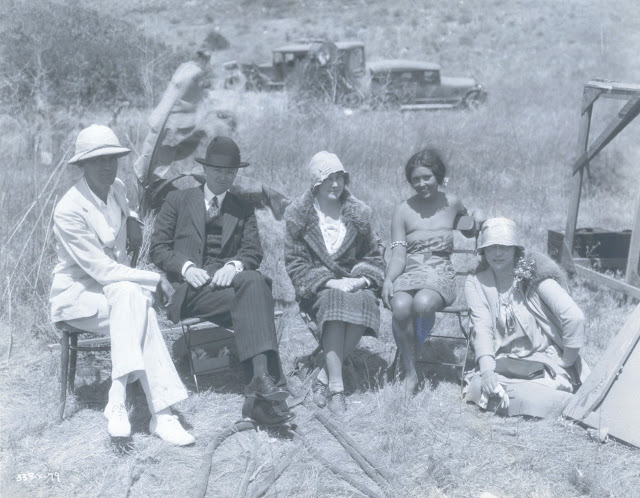South Sea Sinning --- Part One
I find MGM south sea idylls anything but idealized. A look at White Shadows In The South Seas, The Pagan, Untamed, and Never The Twain Shall Meet taught me why they never caught on as an ongoing genre like, say, jungle pics. At least for Metro, it was success in the jungle that spared us further sailings below the equator, a relief in the long run, as ones they took are among harshest and most unpleasant sits of the era. White Shadows In The South Seas indicts Caucasian abuse and exploitation of noble island folk, its onscreen stance an interesting comparison with what director W.S. Van Dyke observed, and wrote about, for a (very private) diary he kept during production from late-1927 to mid-'28. These turned up in an attic trunk generations later and saw publication as W.S. Van Dyke's Journal: White Shadows In The South Seas (1927-28), a backstage wonder you wish existed on more classics made then or ever.
Against lovely scenics (that must have been a lulu on 35mm nitrate) come bleak happenings and a bummer wrap to cause wonder as to how White Shadows managed whopper grosses when new. Metro's crack selling can take credit, and there was novelty of sights (and synchronized sound with native music) not before captured on such lavish and locationed scale. Basis was a novel that Irving Thalberg was said to have liked (the title best of all), a reproach more severe of white trepidations than even the movie he oversaw. Surviving prints don't do White Shadows visual justice, a most critical aspect, as the thing's value rests largely on that. Also, at least on Warner's Archive DVD, there is track spoilage at the beginning ... maybe the discs got immersed in some of that salt water.
 |
| Scurrilous Whites Ply Trade Among Exploited Natives |
 |
| Director W.S. Van Dyke Receives Radio Instructions from Metro Home Base |
Van Dyke's was a takeover, not altogether hostile, of White Shadows In The South Seas, and it was here the director's legend was born. He'd be the explorer/adventurer who mastered movies, also a man's man Flaherty wasn't. And Metro stood ready to polish the image. They had resource to put Van Dyke in
 |
| W.S. Van Dyke, at left, Receives Fan Magazine Writers from the States on White Shadows Location |
Had not Van Dyke died early (1943), and comparatively young (53), there'd be at least a biography. For a director so noted in his lifetime, it's remarkable how little is out there today. The long out of print Van Dyke and The Mythical City Hollywood was commissioned by his mother, Laura Winston Van Dyke (the book's copyright is hers), and written by Robert C. Cannon in 1948. There was apparently a reprint in 1977, though I haven't seen copies. Much of White Shadows lore had origin here. Van Dyke represented a vanguard of he-men who drifted into studios from gold fields, railroad camps ... had he once been a "mercenary," with all that loaded term implied? Anyway, there were none tougher, and to publicity's benefit, Van Dyke looked the part. How he wrestled White Shadows In The South Seas to the ground was only a beginning to fame that unfortunately did not outlive him by enough.
 |
| Ramon Novarro and Dorothy Janis as South Sea Natives in The Pagan |
Van Dyke had sworn he'd never return to the islands. A rousing hit of White Shadows put that vow in abeyance. Might south seas adventure become staple commodity for Metro? Only if it could be done for a price to assure fiscal gain. For an encore they chose The Pagan, with Ramon Novarro to represent island virtues and Donald Crisp white villainy. A happy ending was barely in time to relieve another sour narrative ... rotter Crisp wallops natives with near the sadism he inflicted on Lillian Gish in Broken Blossoms. Van Dyke had learned from the White Shadows trip and filmed with dispatch. Again there was a soundtrack, but no talk. April 1929 release was alongside Metro features with dialogue, though Novarro did vocalize to pleasing effect (enormous song sheet sales), with over half a million in profits a result for The Pagan. Reception to White Shadows In The South Seas and The Pagan pointed to MGM filming further in tropic climes. But could the cycle adjust itself to talking screens?




















































